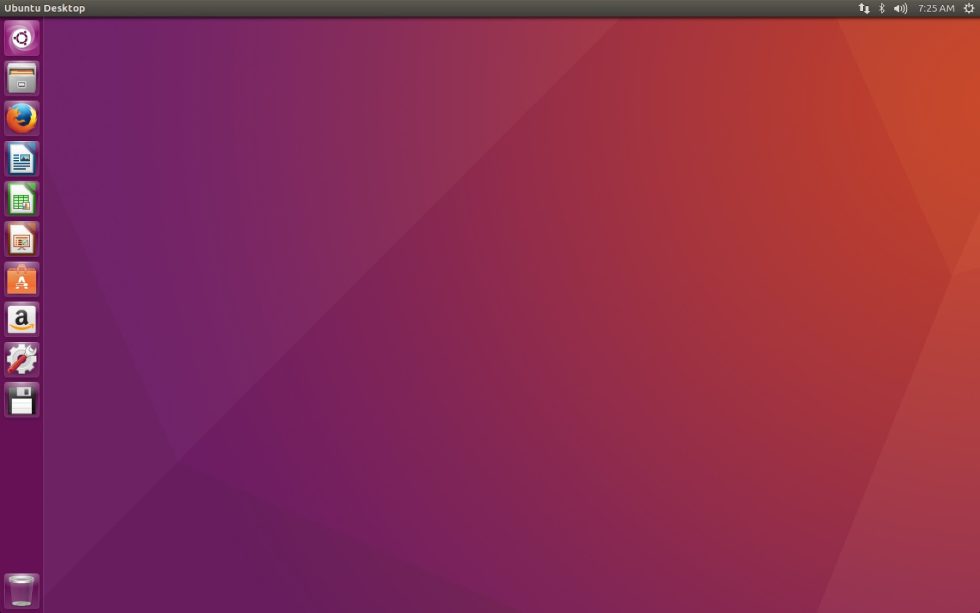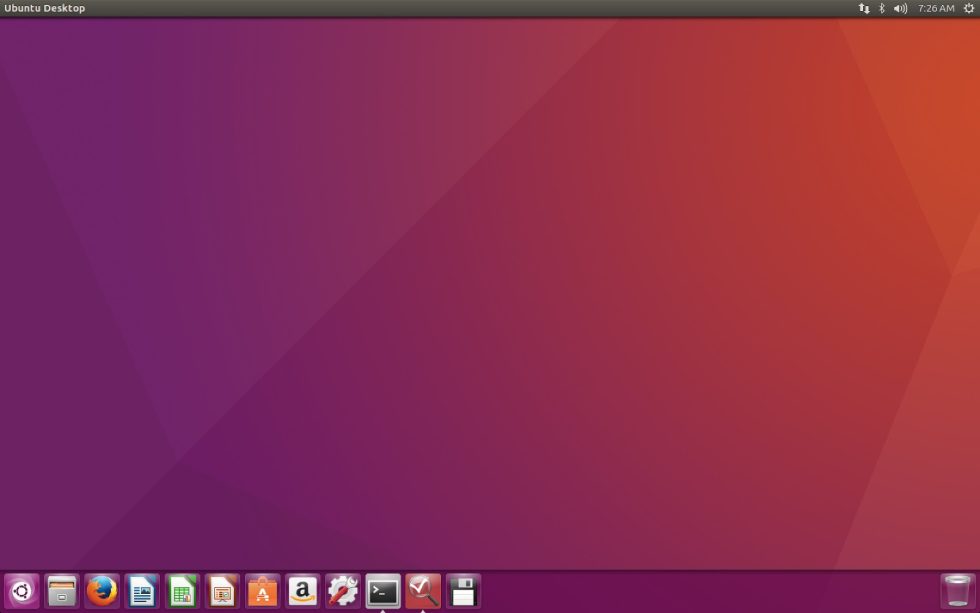A disappointing trend has become clear to Linux users in recent years. Whenever Canonical offers a new Ubuntu Long Term Support (LTS) release, it tends to be conservative in nature. (See our Ubuntu 14.04 review, which earned a "Missing the boat on big changes" headline.) Apparently no one wants to try to support a brand new, potentially buggy piece of code for half a decade.
The last few Ubuntu releases haven't been LTS rollouts, yet Vivid Vervet (15.04) and Wily Werewolf (15.10) also short-changed users in the way of new features. So when Canonical officially released the latest Ubuntu LTS version (Ubuntu 16.04 or Xenial Xerus) this spring, similar expectations loomed. Frankly, this could potentially be the most boring Ubuntu release to date.
Thankfully, perception hasn't matched reality this time around for Ubuntu users. Ubuntu 16.04 is in fact the most exciting release Canonical has put out in recent memory. And after using it for the last few weeks, this may even be the best release Canonical has presented to date.
That's good news for Ubuntu fans, but it's also good news for Canonical. The company has largely ignored its desktop in favor of mobile dreams over the last few years. Those mobile plans are still coming—Unity 8, the Mir display server, and the "convergence" those tools will enable are still a big part of Ubuntu's future—but they aren't part of 16.04 (not in stable form anyway).
Instead, 16.04 largely focuses on improvement to the desktop. But perhaps the biggest change comes from Ubuntu's experience on the server-side, namely the container packaging system Canonical calls Snap packages. The result is that, for the first time in a long time, Ubuntu's desktop release feels like an actual release rather than something the organization feels obligated to push out every six months.

Ubuntu 16.04—now with 100% less "spyware"
For all the new stuff in 16.04, let's start with the biggest headline grabbing omission: online search results. This "feature" debuted back in the autumn of 2012 with Ubuntu 12.10, and what made it controversial was the decision to leave the setting on by default. As such, everything you searched for in the dash was initially sent to Canonical's servers and from there to Canonical's partners. This setup was enough for the Free Software Foundation's Richard Stallman to brand Ubuntu "spyware."
Even if Canonical getting a record of your search terms didn't bother you, the feature could still be annoying for its habit of returning totally irrelevant search results. Worse, it often highlighted potentially NSFW results. One frequently cited example was searches of "Bra" to launch the Brasero CD burning application also returned Amazon results for bras.
Canonical dug itself an even deeper hole when it went after a site critical of the search feature for trademark violations. FixUbuntu.com, which showed users how to disable the search features, was asked to "remove the Ubuntu word from your domain name and Ubuntu logo from the website." Canonical founder Mark Shuttleworth later called the letter a mistake in his blog. "Someone at Canonical made a mistake in sending the wrong response to a trademark issue," he wrote. Whatever Shuttleworth's intentions, it merely furthered the PR disaster.
Search lens is finally off by default, which is good for most users. Still, the damage it did to Canonical's image and standing in the free software world is unlikely to be undone swiftly. In the end, Canonical managed to generate a tremendous amount of ill will for a feature the majority of its users didn't seem to want and which in all likelihood generated a negligible amount of profit for the company.
If by chance you found the search results helpful, however, you can turn them back on in 16.04 by heading to the system settings app.
What's new in Ubuntu 16.04
Perhaps the biggest change for anyone upgrading from Ubuntu's previous LTS release (the two-year-old 14.04) is that Ubuntu now uses the systemd init system rather than its homegrown Upstart init system. As with several other of Ubuntu's attempts to go its own way, the group has abandoned its efforts in this area in favor of upstream tools. The work of stripping systemd out of Debian to put in Upstart was evidently deemed more effort than it was worth.
Systemd will be old news for many, and you can find a lengthier explanation in our review of Debian 8. But for anyone who sticks with LTS releases, one of the last ways to avoid systemd is now gone.
In practical terms, the move from Upstart to systemd is not particularly difficult. It's certainly nothing like upgrading straight from an older init system like System V. Still, this remains a significant change to be aware of, particularly on servers where Ubuntu's LTS release is incredibly popular.
A more visual change in 16.04 is the ability to move the Unity launcher to the bottom of the screen. This long requested tweak has actually been possible via third-party tools for some time, but there were always some inconsistencies and odd behavior. Thanks to the work of the Ubuntu Kylin developers, it's now an officially sanctioned option (in fact it's the default layout for Ubuntu Kylin, the official Chinese version of Ubuntu).

That said, this feature does require installing the dconf editor and diving into the options a bit to turn it on. Once you've installed dconf-editor, navigate to com > canonical > unity > launcher > launcher-position to find the option to switch the launcher position (alternately, the third-party Unity-tweak-tool supports it as well).
Systemd isn't the only upstream project replacing one of Canonical's own with 16.04. The Ubuntu Software Center sees a similar makeover, though in this case the replacement is a bit closer: GNOME Software.
-
Ubuntu's new Software Center comes courtesy of GNOME Software.Scott Gilbertson
-
The new Software Center retains the familiar feature details, along with user ratings and reviews.Scott Gilbertson
The Ubuntu Software Center has been largely abandoned for some time. GNOME on the other hand has been pouring considerable effort into its own software app, so the move makes sense for Ubuntu. It's just upstream and it's flexible enough that Canonical can customize it, but the organization doesn't have to maintain it directly. If you're already familiar with both apps, the first thing you'll notice is that Canonical appears to have mashed the two together. To my eye, the result is not quite as nice as GNOME Software on its own. However, this implementation does bring in all the reviews and content of the old Ubuntu Software Center (which, incidentally, is still in the repos if you want it).
Ubuntu's version of GNOME Software also gets some of the nice new upstream features like support for firmware updates via the Software Center. Provided your firmware is available via the Linux Vendor Firmware Service, you'll be able to update your devices with a single click in the Software Center.
If you eschew graphical software apps for the simplicity of the command line, be aware that Ubuntu 16.04 supports the simpler apt command alongside apt-get. In addition to marginally less typing, apt nicely unifies a bunch of apt- commands with better documentation and support for progress bars.
reader comments
177